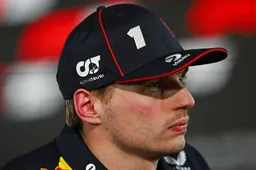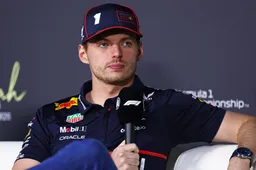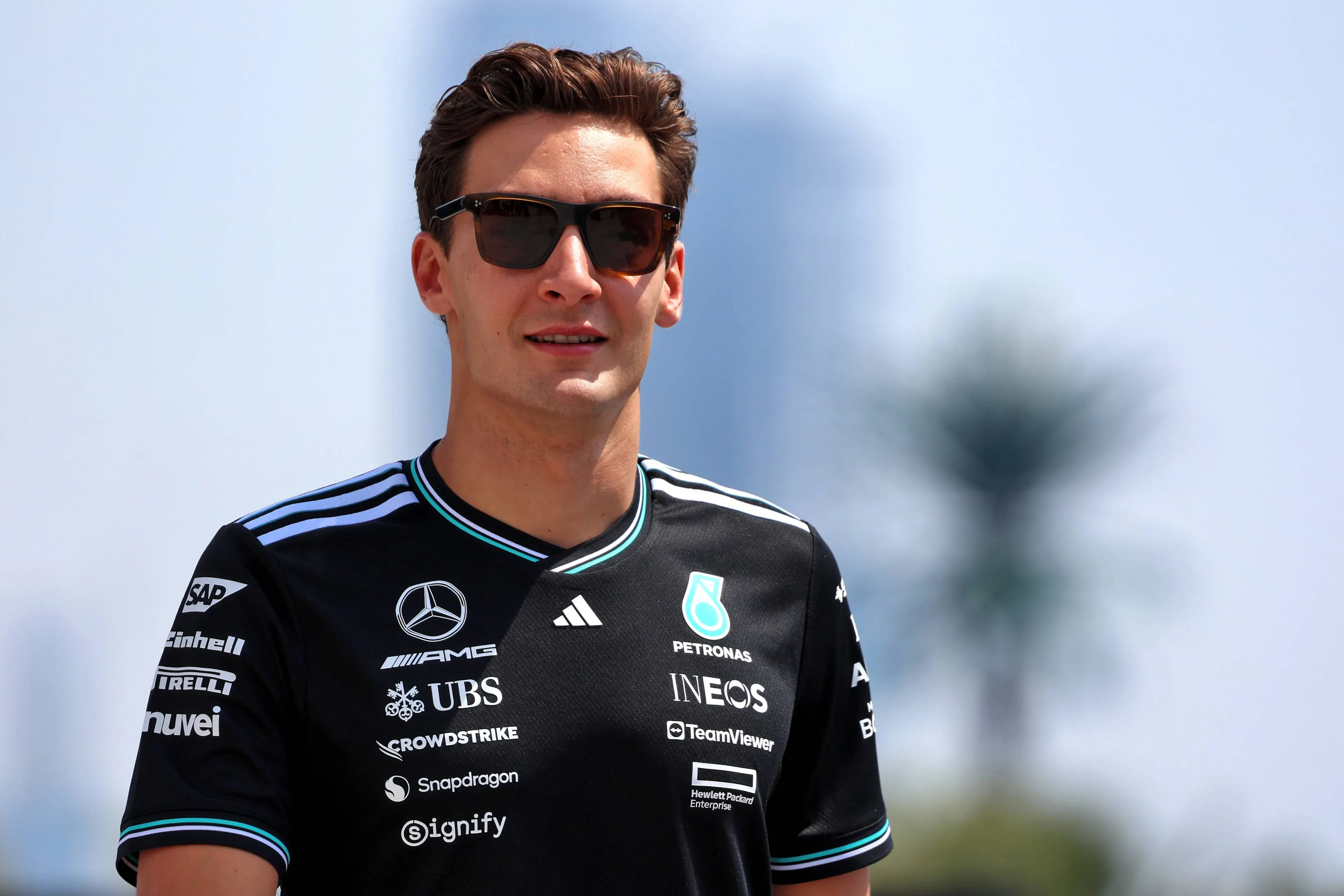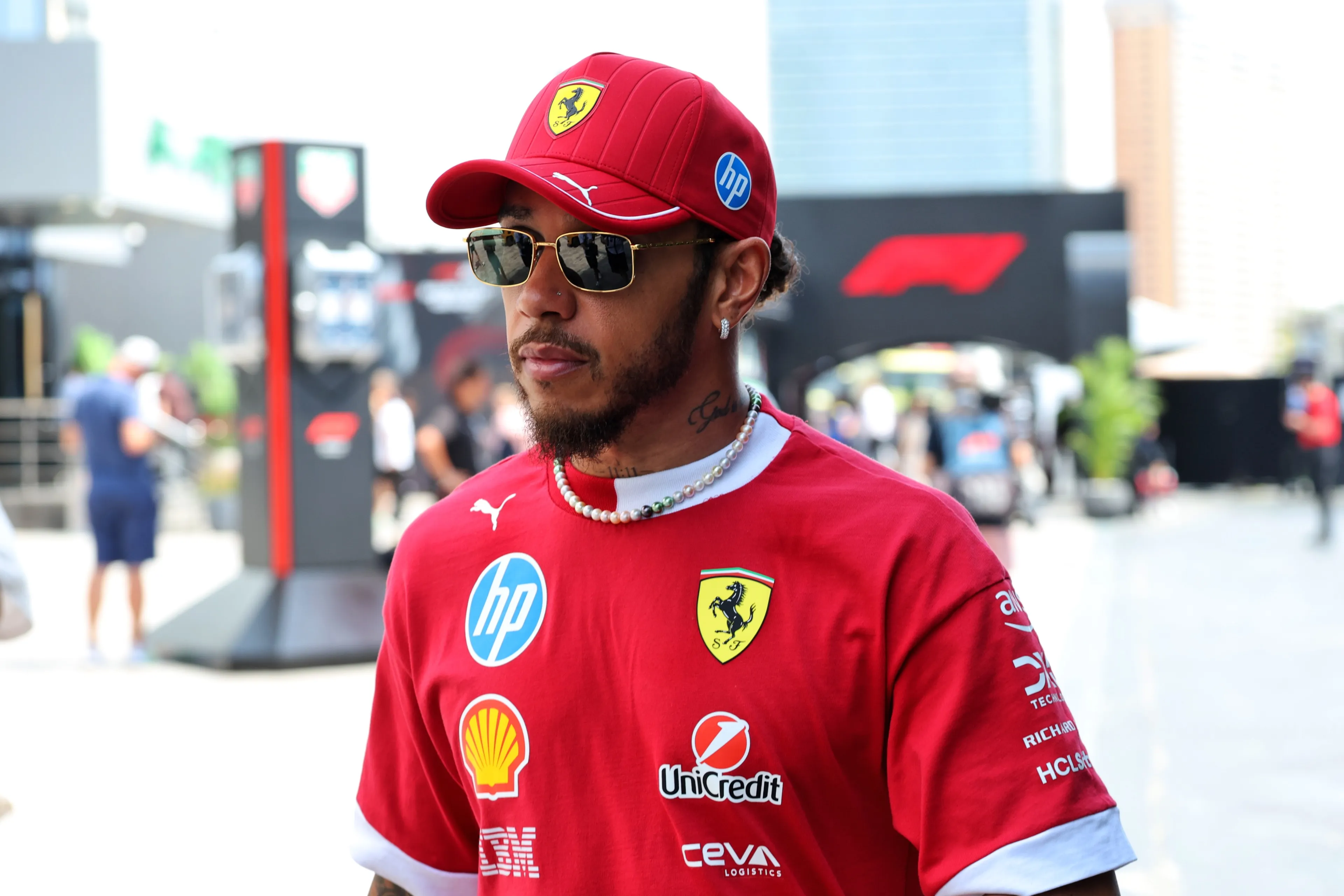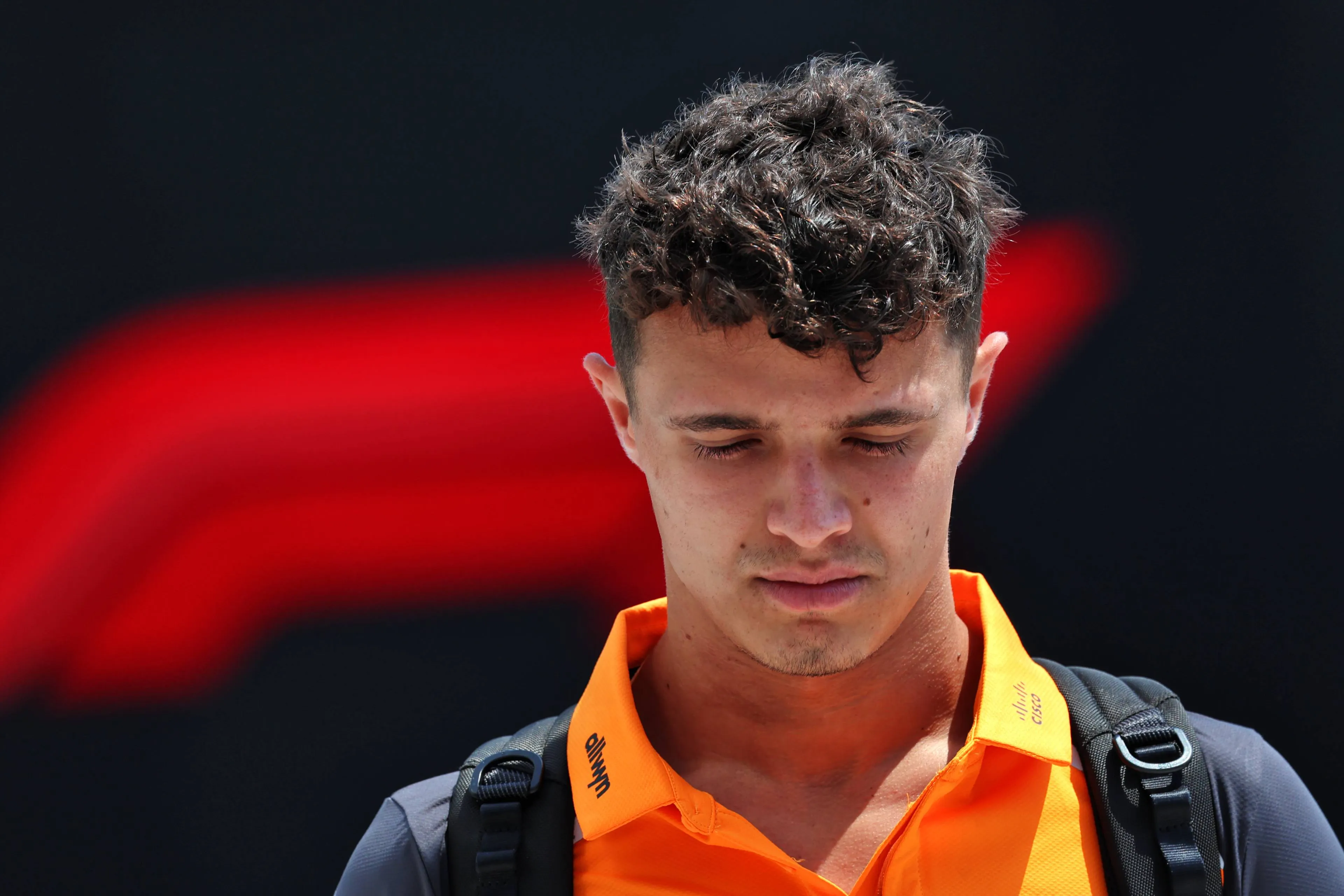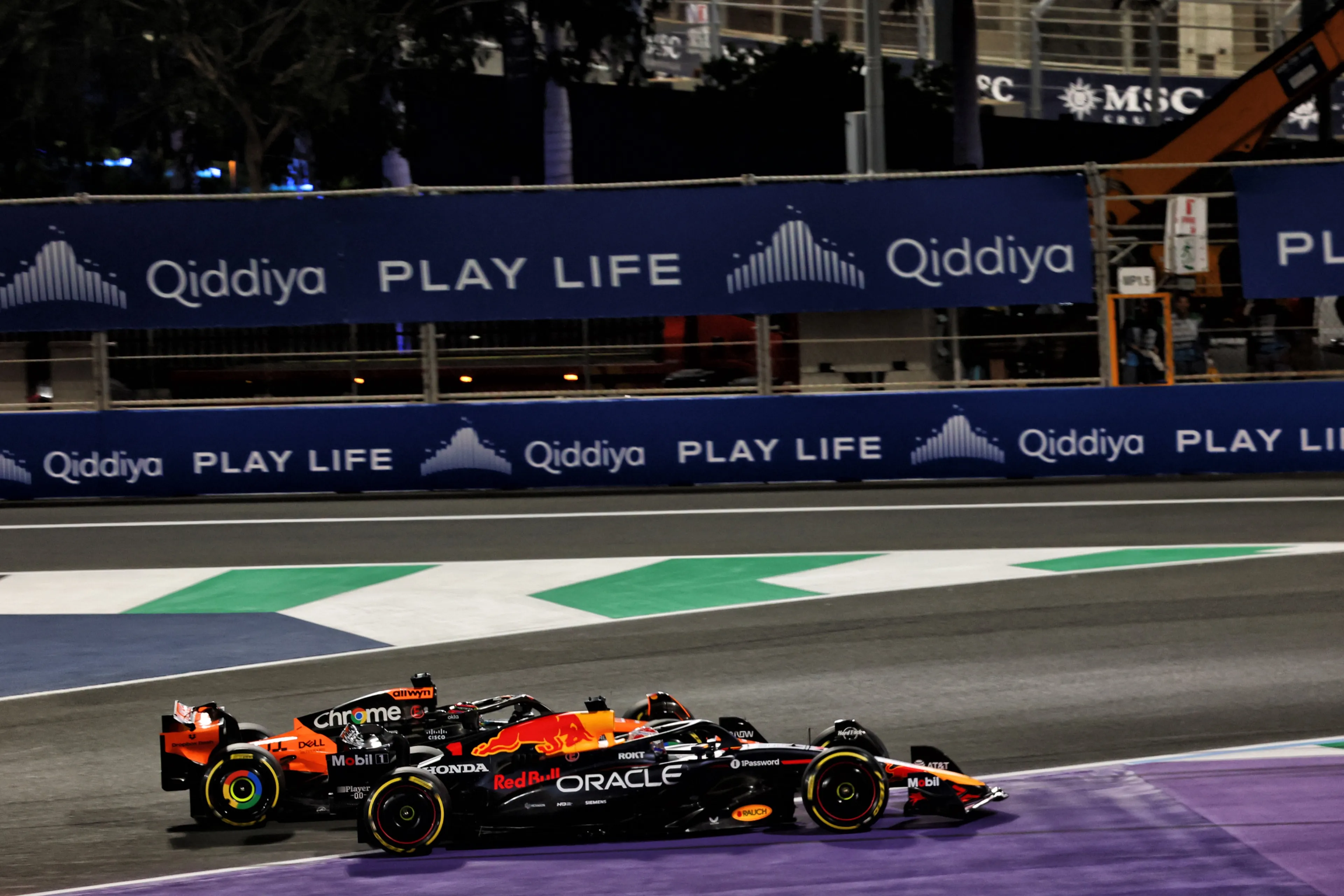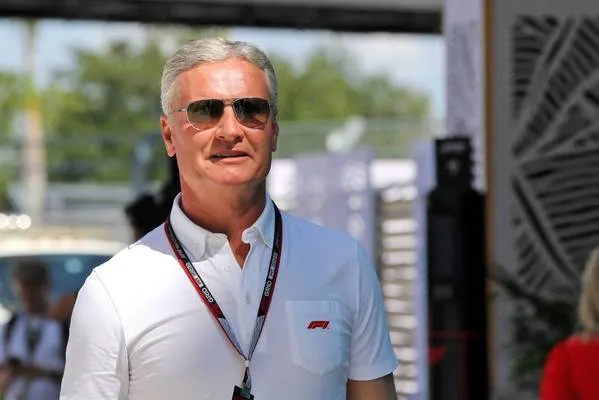F1 Tech | Can this positive step by Red Bull last over time for Verstappen?
18:00, 22 Apr
0 Comments
The Saudi Arabian Grand Prix weekend offered a very tight and exciting battle between McLaren and Verstappen, not only in qualifying, but also in the race, where Piastri was eventually able to get the victory. The RB21 showed off encouraging progress, but was this progress real or was it due only to the track layout and the conditions faced during the race? Let’s try to figure this out.
Big "hidden" changes on the RB21
For the Saudi Arabian Grand Prix, Red Bull introduced a series of mechanical changes inside the cockpit that aimed at improving weight distribution on the car. The way weight is distributed in a car is particularly important, and engineers always try to keep the centre of gravity as low as possible to have a better performance.
In the case of Red Bull, the new weight distribution should have helped to make the car more balanced between front and rear axle, especially in the slow speed, which is where the RB21 suffered the most compared to McLaren in the first races of the season. These updates didn’t seem to have an impact on performance in FP1, as the car was still very nervous to drive, being very inconsistent from corner to corner and showing some understeer in slow corners, which translated into oversteer at the exit.
Despite this, the new “hidden” updates worked, opening new development paths for the future, as confirmed by Helmut Marko after FP1: “As I said, they [mechanical updates] were massive and we had a new approach, which is working in one direction.”
These weren’t the only changes that the team brought for this weekend. As highlighted in the drawing below, a new beam wing appeared in FP1: this is a single-element beam wing, which is characterised by a very low chord at the connection to the endplate and an increasing chord towards the connection to the rear impact structure (blue arrow).
Moreover, after the difficulties faced during FP1, the team made a small but important change to the rear wing: the DRS flap wing tip was partially cut at its connection to the endplate, in order to reduce the surface hit by air and thus drag (red arrow). This last-minute change was mainly aimed at improving the RB21 top speed, making the car quicker in the straight-line.
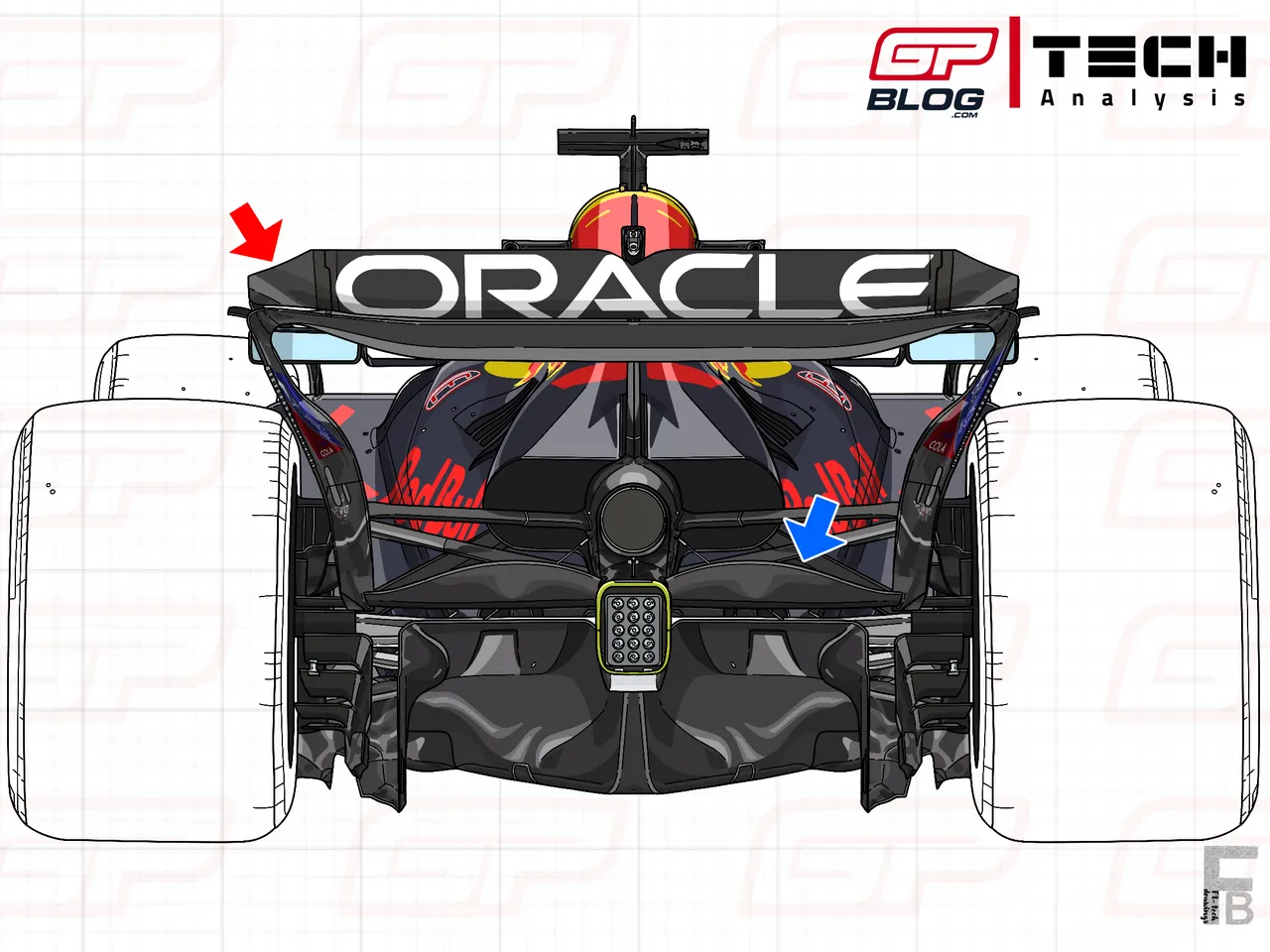
Changes to improve the RB21's top speed
All these changes, matched with the changes of set-up made by the team between FP1 and FP2, made the RB21 much more competitive during the second practice, with Verstappen able to finish 0.280 seconds behind Piastri in the qualifying simulation. The RB21 still suffered from the high temperatures in the long run simulations, as the front tyres started overheating after a few laps.
After the struggle in the long runs, the team further improved the balance of the car during the night, making it even more “pointy”. The Jeddah Corniche Circuit, in fact, is characterised by fast corners and straights, where two key features are required: efficiency and a strong front end, which is crucial to set competitive lap times through Sector 1.
The set-up choice made by the team, in fact, seemed to work very well: the stiff mechanical set-up and the low ride height chosen allowed the RB21 to generate a lot of downforce from the Venturi channels and be very quick and competitive through the high-speed corners in the first sector. At the same time, the “cut” rear wing provided a very good top speed at the end of the straight, proving to be a crucial weapon in the race too.

Rear wing used in FP1 vs. FP2/Race
All these set-up changes improved Verstappen's confidence and allowed him to be extremely quick on the soft tyres during qualifying, and eventually steal the pole position from Piastri by only +0.010.
After qualifying, Verstappen himself praised the changes made by the team, underlining that the Jeddah Circuit favoured their car and that they still lack a bit of performance though the slow speed: “When you have tracks where you need a lot of rotation mid-corner, and long-duration corners, which you have in Bahrain, that's a big problem for us.”
Starting from the first spot represented a huge advantage for Verstappen, who was able to capitalise on it during the first stint: despite having a slower row pace compared to Piastri, his RB21’s incredible top speed prevented the Australian from trying to attack him. Moreover, after Piastri ran for a series of laps inside Verstappen’s DRS, his medium tyres started to overheat, making him lose performance throughout the second half of the stint.
The positive aspect for Red Bull was that the pace difference between Verstappen and Piastri wasn’t that big, but this was due to a series of elements:
- First of all, the Jeddah Corniche Circuit favours stiff set-ups and cars very close to the ground, which is exactly what the RB21 needs to work at its best;
- Secondly, the very smooth tarmac and the cool temperature faced during the night race limited tyre wear, which would have been massive if the race started under the sunlight.
- Thirdly, the possibility for Verstappen to run in free air during the first stint on the mediums allowed him to preserve his tyres and make them last longer, even if his pure pace wasn’t as good as McLaren’s.
- Last but not least, the very efficient set-up chosen prevented Piastri from being close enough on the straights to attack Verstappen.
Still some negative aspects that need to be fixed
At the same time, however, Verstappen also pointed out that the RB21 still seems to have a very small working window and that is extremely difficult for engineers to make the car work inside it, causing big leaps in performance depending on the conditions: “We made some minor changes to the car, but they were clearly big enough to feel, and I think that's a bit the story of our car. It can be really hit and miss. When we get it right, I think it's competitive, of course. But, yeah, when we don't get it right, it's a lot more difficult. “
Both these aspects were visible during the last two weekends: in Suzuka, the cold conditions faced and the low tyre deg due to the new tarmac favoured Red Bull, allowing engineers to make the car work at its peak performance and win the race. On the other hand, the hot conditions in Bahrain and the great amount of slow-speed corners forced engineers to choose a setup that didn’t make the RB21 work in its sweet spot, resulting in Verstappen fighting with Gasly for P6 for the whole race.
To improve their performance and be closer to McLaren in every condition and on every circuit, Red Bull not only needs a better job in finding the right set-up for the car, but new components and updates are needed to improve the RB21’s potential also on less favourable layouts.
Read also
This article was written in collaboration with Olly Darcy
Read more about:
Popular on GPBlog

1
Albers rallies behind Verstappen, calls out FIA: 'Just keeps grabbing money'
969 times read

2
Piastri's mother worried about Oscar: 'That moment against Verstappen was horrifying'
636 times read
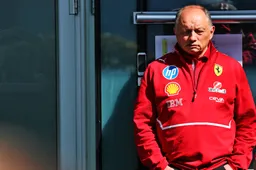
3
Furious Vasseur snaps at "f****** nonsense" as he defends Hamilton once more
606 times read

4
F1 Today: Norris tells media 'Blah, Blah, Blah, and Horner notes Piastri as Verstappen's direct rival
584 times read




